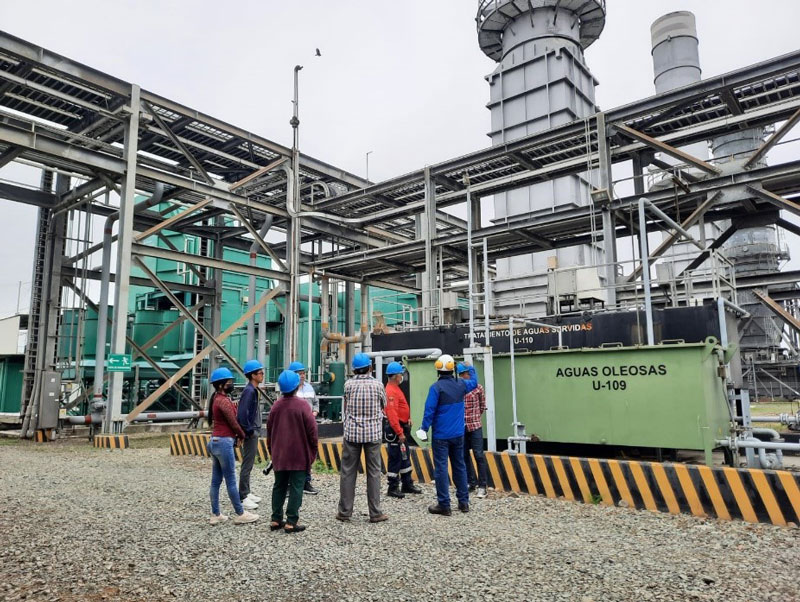Overcoming chronic pain: An Australian trial helps sufferers retrain their brains to find relief
By Belinda Smith
Daniel dos Santos Costa spent his early 20s DJ’ing and promoting parties, concerts and festivals in Brazil — good times that would leave him with a painful legacy.
 While lugging heavy equipment around, as well as riding a motorbike and generally having bad posture, he hurt his lower back.
While lugging heavy equipment around, as well as riding a motorbike and generally having bad posture, he hurt his lower back.
And the pain didn’t go away — it became chronic, a constant low humming ache that would, at least once a year, explode into pain so excruciating it sent him to hospital. “I went to chiropractors and physiotherapists for pretty much 15 years of my life,” said Mr dos Santos Costa, now in his late 30s and living in Sydney, Australia.
Each time he tried something new, he’d get some relief, but it never lasted. The pain always returned.
But that changed in 2019 when he completed a new 12-session program developed by Australian researchers.

Daniel dos Santos’ bad back regularly sent him to hospital until he participated in a chronic pain trial.
In a clinical trial published in the Journal of the American Medical Association in May, people who underwent the program, called sensorimotor retraining, reported less pain and disability on average after treatment than those who didn’t.
About a quarter of program participants — including Mr dos Santos Costa — fully recovered.
When pain turns chronic
Chronic pain — that’s pain that persists for more than three months — is a massive problem. It can be incredibly stressful and debilitating.
A report by Deloitte estimated that in 2018 alone, lost productivity, healthcare expenditure and other expenses due to chronic pain cost Australia more than $139 billion — a figure that’s expected to rise to $216 billion by 2050. Worldwide, the figure could approach $7 trillion.
Its most common manifestation is chronic back pain. And if you don’t have a bad back, you probably know someone who does: it affects around one in six people. It often starts with what’s called acute pain — like the sharp stabs and twinges you feel if you strain your back trying to shift a heavy armchair.
Most of the time, that pain goes away once the injury has healed. But for some, like Mr dos Santos Costa, the pain sticks around.
So what can be done about all these bad backs? First, it’s good to know a little about how pain becomes chronic — but everyone’s experience is different. There’s no single trigger for chronic back pain. A history of conditions such as anxiety, depression, PTSD, or childhood trauma can predispose a person to develop chronic pain.
What’s going on in our life at the time of injury — even our mood — also affects whether the pain sticks around.
 “A football player can have a broken jaw and finish the game,” said Steven Faux, a rehabilitation and pain physician at St Vincent’s Hospital Sydney and UNSW.
“A football player can have a broken jaw and finish the game,” said Steven Faux, a rehabilitation and pain physician at St Vincent’s Hospital Sydney and UNSW.
The transition from acute to chronic back pain — and how it persists — is incredibly complex, UNSW and Neuroscience Research Australia psychologist and pain researcher James McAuley said, and involves changes to a person’s brain.
“Pain researchers have known for decades that pain is far more complicated than what’s going on at the base of the spine.
“There are very clear structural and functional differences between the brains of people who have had back pain for a long time and people who don’t have back pain.”
So, in most people with chronic back pain, a signal that would normally be interpreted as, say, the lower back moving — or even just resting — is misinterpreted by the brain, which generates a feeling of pain instead.
In a way, chronic pain is like having a particularly touchy car alarm. If someone tries to break into your car, the alarm will start blaring. And that’s fine — it’s a useful warning that something’s awry. But if a cat leaping onto the hood or a fireworks explosion also sets it off, the alarm isn’t serving a useful purpose (unless you really hate paw prints on your windshield).
It’s estimated about 90 per cent of chronic back pain is due to this oversensitive alarm, and not driven by a specific pathology or physical injury in the back.
Chronic back pain is notoriously hard to treat
While acute and chronic pain might seem, on the surface, to be similar sensations, they’re very different conditions that require very different treatments, Professor Faux said.

Mr dos Santos Costa can now ride his motorbike without pain.
“There’s a very strong medical model for acute pain, which is you get a pain in the tummy, you get an X-ray and an examination, they take your appendix out, and then your pain goes away,” He adds: “So that has developed in the minds of people as a model for management of pain.”
But it’s not helpful for a chronic bad back. “The evidence is that surgery doesn’t improve back pain,” Professor Faux said.
Opioid drugs for chronic pain come with a whole swag of problems. Aside from the risk of addiction, long-term opioid use can make a person’s whole body more sensitive to pain.
So current best-practice treatment plans, such as those at St Vincent’s pain clinic, encompass not just the physiological and anatomical aspects of pain, but the psychological and social too.
The psychological component of chronic pain gives therapists potential treatment avenues that don’t run the risk of conditions such as addiction or extreme sensitivity to pain. One of these ways is sensorimotor retraining.
Sensori- what now?
Sensorimotor retraining is a package of techniques developed by researchers in Australia, including Professor McAuley. It comprises 12 face-to-face sessions with an exercise or physiotherapist over three or four months.
The first part of the intervention is pain education — to help a person with a bad back understand how their pain is generated — followed by exercises and techniques to get the back and the brain communicating better (more on those later).
Pain researcher and physiotherapist Hayley Leake helped deliver the intervention in a Sydney-based clinical trial involving 276 people with chronic back pain. She administered the graded sensorimotor retraining program to Mr dos Santos Costa in 2019.
Before starting the program, Mr dos Santos Costa was certain his bad back was caused by a compressed disc. That’s because, like many people with back pain, he’d had his spine scanned and it showed a squashed disc that, the doctor explained, was pinching a nerve.
Mr dos Santos Costa didn’t know it at the time but seeing that image might’ve done more harm than good.
“We’ve found over time that when we image the backs of people with back pain, and compare them to people with no pain, they look very similar,” Ms Leake said. “And if you’ve seen that image … that’s really threatening, and threatening information can turn the dial up, make the brain make more pain.
So how does a therapist like Ms Leake convince someone like Mr dos Santos Costa that his pain is caused by changes in his brain, not a dodgy disc? “It takes effort, and it takes patience, and it does take time,” she said. “A lot of people will tell us that they deeply think that pain means that their body is damaged. And there’s nothing wrong with that — it’s a really common and normal thought to have.”
She adds: “The step after that is really to try to pull that apart a little bit more, and by trying to go through your own experience, we can find times where maybe that relationship [between pain and damage] isn’t strong.”
Mr dos Santos Costa went into the trial with an open mind, ready to take on board anything Ms Leake threw at him. Even so, it took him a minute to come to grips with the idea that his painful back was not due to a compressed disc. “I was like OK, I don’t see it that way, but I’ll accept it. I’m the guinea pig here,” Mr dos Santos Costa said.
Reconnecting brain with back
Next came retraining sessions that aimed to reconnect the back with the brain.
People with chronic back pain have trouble with what’s called “tactile acuity”, Professor McAuley said. This is the ability to be able to be accurate about where and how you’re being touched on the back. One way to encourage the brain to more accurately process signals from the body was to gently touch a person’s back with a pair of calipers and have them guess whether they were being touched by one point or two.
As a person hones their tactile acuity, Professor McAuley said, “there’s less uncertainty about the information that’s coming from the back into the brain, and less uncertainty means there’s less threat — and less pain.” Learning this was a bit of a breakthrough moment for Mr dos Santos Costa.
The trial compared the effects of sensorimotor retraining with another group. These participants received an intervention that included treatments like brain stimulation and low-intensity laser therapy, but they were sham treatments — the machines didn’t really do anything.
After four to five months, their pain levels dropped from 5.8 to 4.0 (on a scale from zero to 10).
The sensorimotor retraining group started with a similar pain level — 5.6 — but 18 weeks after finishing the program, reported an average of 3.1. “A one-point difference out of 10 between the groups doesn’t seem very much,” Professor McAuley said. “But within the context of every other back pain treatment that’s been compared to placebo, nothing has made that one-point difference.”
They also found a quarter of people in the sensorimotor retraining group recovered fully at six months and one year post-treatment — twice as many as in the sham treatment group.
Professor Faux, who was not involved in the trial, said it was a “wonderful study, because it teaches people about the impact of pain on their body and teaches people movement” without using surgery or opiates. For him, the more interesting results were related to what are called secondary outcomes.
People in the sensorimotor retraining group reported less disability, a better quality of life, and were less fearful of moving in the months after treatment, compared to the sham group. “It’s a small study, but most pain studies are pretty small, and it needs replication,” Professor Faux said. “But I think it’s terrific and very interesting and worth following.”
Now what for the program?
While there were success stories from the trial, for some, the intervention did very little.
So Professor McAuley and his colleagues interviewed them and found that those participants could not be convinced their pain was being generated by their brain, and not triggered by damage in their back. “And no matter what we tried to say in the trial, it just didn’t shift those beliefs,” Professor McAuley said.
He speculates that as “chronic back pain is caused by damage” dogma is overturned, more people will respond better to treatments like sensorimotor retraining.
Given the improvement shown in the sensorimotor retraining trial, the next step for the research crew is to train therapists and see if the intervention works in clinics elsewhere.
Since the program finished, Mr dos Santos Costa’s chiro and physio costs are zero, and stressful times that would usually send him to hospital in excruciating pain no longer do.
For people with a bad back looking to ease their pain, he has some advice: “You have to believe in the process and believe in what you try.”
___________________
Credit: ABC Australia News

















